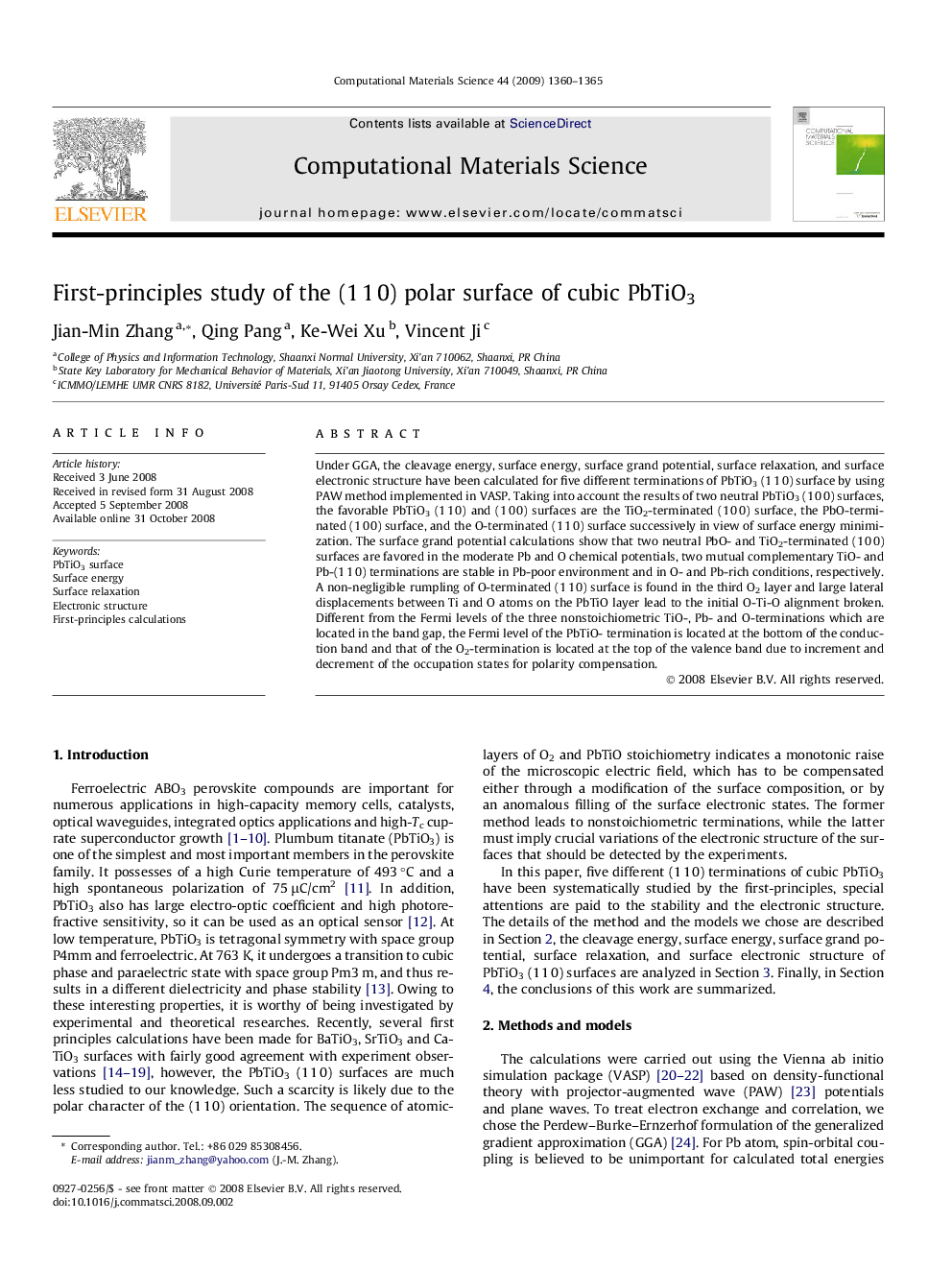| Article ID | Journal | Published Year | Pages | File Type |
|---|---|---|---|---|
| 1563918 | Computational Materials Science | 2009 | 6 Pages |
Abstract
Under GGA, the cleavage energy, surface energy, surface grand potential, surface relaxation, and surface electronic structure have been calculated for five different terminations of PbTiO3 (1Â 1Â 0) surface by using PAW method implemented in VASP. Taking into account the results of two neutral PbTiO3 (1Â 0Â 0) surfaces, the favorable PbTiO3 (1Â 1Â 0) and (1Â 0Â 0) surfaces are the TiO2-terminated (1Â 0Â 0) surface, the PbO-terminated (1Â 0Â 0) surface, and the O-terminated (1Â 1Â 0) surface successively in view of surface energy minimization. The surface grand potential calculations show that two neutral PbO- and TiO2-terminated (1Â 0Â 0) surfaces are favored in the moderate Pb and O chemical potentials, two mutual complementary TiO- and Pb-(1Â 1Â 0) terminations are stable in Pb-poor environment and in O- and Pb-rich conditions, respectively. A non-negligible rumpling of O-terminated (1Â 1Â 0) surface is found in the third O2 layer and large lateral displacements between Ti and O atoms on the PbTiO layer lead to the initial O-Ti-O alignment broken. Different from the Fermi levels of the three nonstoichiometric TiO-, Pb- and O-terminations which are located in the band gap, the Fermi level of the PbTiO- termination is located at the bottom of the conduction band and that of the O2-termination is located at the top of the valence band due to increment and decrement of the occupation states for polarity compensation.
Related Topics
Physical Sciences and Engineering
Engineering
Computational Mechanics
Authors
Jian-Min Zhang, Qing Pang, Ke-Wei Xu, Vincent Ji,
